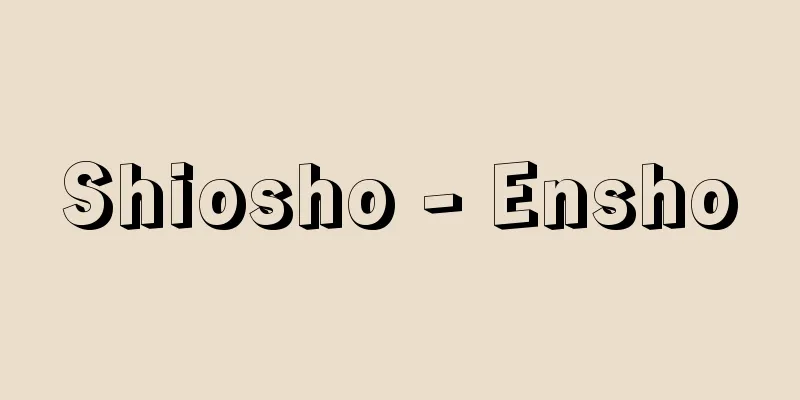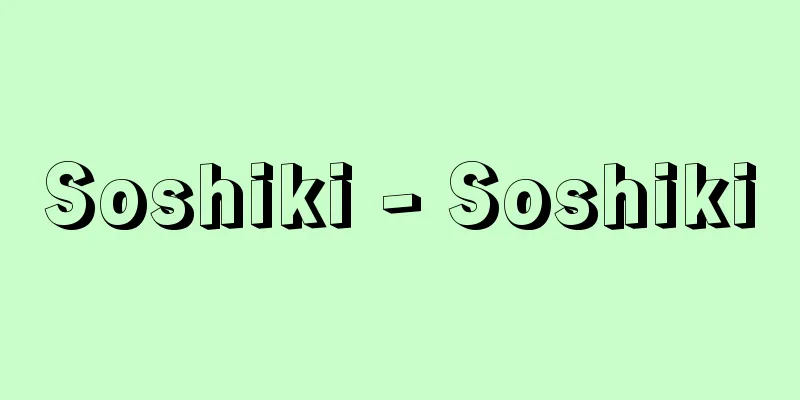Potassium fertilizer - Karihiryo

|
A general term for fertilizers whose main ingredient is potash (the industrial common name for potassium). Wood ash has been used as a fertilizer since ancient times, and its main ingredient, potash, comes from the Arabic word for ash. The potash fertilizers currently used in Japan are potassium chloride (potassium chloride) and potassium sulfate (potassium sulfate), but almost all of them are imported. Both potassium chloride and potassium sulfate are water-soluble, fast-acting fertilizers, and both are chemically neutral, but as physiological acidic fertilizers, they will acidify the soil if used for a long period of time. Potassium chloride is mainly produced from potassium salt solutions concentrated and separated from potassium ores such as carnallite and sylvinite, or from natural brine (salt water). Potassium sulfate can be produced by using sulfates in potassium ores, reacting potassium salts with sulfuric acid, or as a by-product of producing hydrochloric acid. The difference in fertilizer effectiveness between the two is often unclear, but most test results show that potassium sulfate is more advantageous. Tobacco, strawberries, potatoes, and lettuce are particularly averse to chlorine, so potassium sulfate is considered to be better. In Japan, the ratio of the two is about 8:2, with potassium chloride accounting for more. The component content is 50% potassium chloride (as water-soluble potassium) and over 45% potassium sulfate. Although potassium fertilizers are unlikely to cause excessive damage to crops, applying large amounts at once can lead to leaching, excessive absorption by crops, and damage to seed germination. To improve this, potassium silicate fertilizers with adjusted solubility have been developed and are primarily used as raw materials for chemical fertilizers. Most potassium fertilizers are consumed in the form of compound fertilizers. [Yuki Koyama] "Fertilizer Handbook, 5th Edition, edited by Date Noboru and Shiozaki Hisao (1997, Rural Culture Association)" ▽ "Fertilizer Yearbook, various editions, edited by the Fertilizer Association Newspaper Division (Fertilizer Association)" [Reference items] | | | | | |Source: Shogakukan Encyclopedia Nipponica About Encyclopedia Nipponica Information | Legend |
|
カリ(カリウムの工業的通称名)を主成分とする肥料の総称。草木灰は昔から肥料として使用されてきたが、その主成分であるカリの語源はアラビア語で灰を意味する。現在日本で使用されているカリ肥料は塩化カリ(塩化カリウム)と硫酸カリ(硫酸カリウム)であるが、そのほぼ全量を輸入に頼っている。 塩化カリ、硫酸カリともに水溶性の速効性肥料で、いずれも化学的には中性であるが、生理的酸性肥料で長期間連用すると土壌を酸性化する。塩化カリはおもにカーナライト、シルビニットなどのカリ鉱石や自然の鹹水(かんすい)(塩水)から濃縮分離したカリ塩溶液から製造される。硫酸カリはカリ鉱石中の硫酸塩を利用する方法のほか、カリ塩に硫酸を反応させてつくられるもの、塩酸を製造する際の副産物として得られるものなどがある。両者の肥効の差ははっきりしない場合が多いが、どちらかといえば硫酸カリの有利性を認める試験結果が多い。タバコ、イチゴ、ジャガイモ、レタスなどはとくに塩素を嫌うので、硫酸カリがよいとされる。国内消費に占める両者の割合は約8対2で塩化カリのほうが多い。成分含有量は塩化カリが50%(水溶性カリとして)、硫酸カリが45%以上である。 カリ肥料は作物に対する過剰障害は出にくいが、一度に多量に施すと溶脱や作物による余分な吸収や種子の発芽障害がおこることがある。この改善のため、溶解度の調整を試みたケイ酸カリ肥料が開発され、おもに化成肥料の原料に使用されている。カリ肥料の多くは複合肥料の形で消費されている。 [小山雄生] 『伊達昇・塩崎尚郎編著『肥料便覧』第5版(1997・農山漁村文化協会)』▽『肥料協会新聞部編『肥料年鑑』各年版(肥料協会)』 [参照項目] | | | | | |出典 小学館 日本大百科全書(ニッポニカ)日本大百科全書(ニッポニカ)について 情報 | 凡例 |
<<: Caliph - karifu (English spelling)
>>: Kalibangan (English spelling)
Recommend
Wedelia prostrata - Wedelia prostrata
…[Hiroji Koyama]. . … *Some of the terminology th...
Encina, J. del (English spelling) EncinaJdel
…The period of the Catholic Monarchs (Isabella I ...
Kanasana Shrine
It is located in Ninomiya, Kamikawa-machi, Kodama...
Gita Rahasya - Gita Rahasya
…He promoted the trade union movement from the Fi...
Occult blood test
…This type of bleeding is called occult bleeding....
wow flutter
…In the audio industry, a device that combines a ...
Zangetsu - Zangetsu
[1] [noun] The moon that remains in the sky until ...
Onji (relative) - Onji
...In Kikaijima, Amami, they were called Okura an...
Sringeri
…His influence on later generations was so great ...
Misaki Peninsula
A peninsula jutting out from the northwest coast ...
Judicial Statistics
A general term for statistics related to civil, cr...
species ecology
...However, systematization as a unified science ...
Omer Pa a Latas (English spelling) OmerPaaLatas
… [Tanaka Issei]. . . *Some of the terminology th...
Awa sect theory - Awa sect theory
...Afterwards, he gained many followers among the...
Wood, G.
...After that, a generation that had assimilated ...









